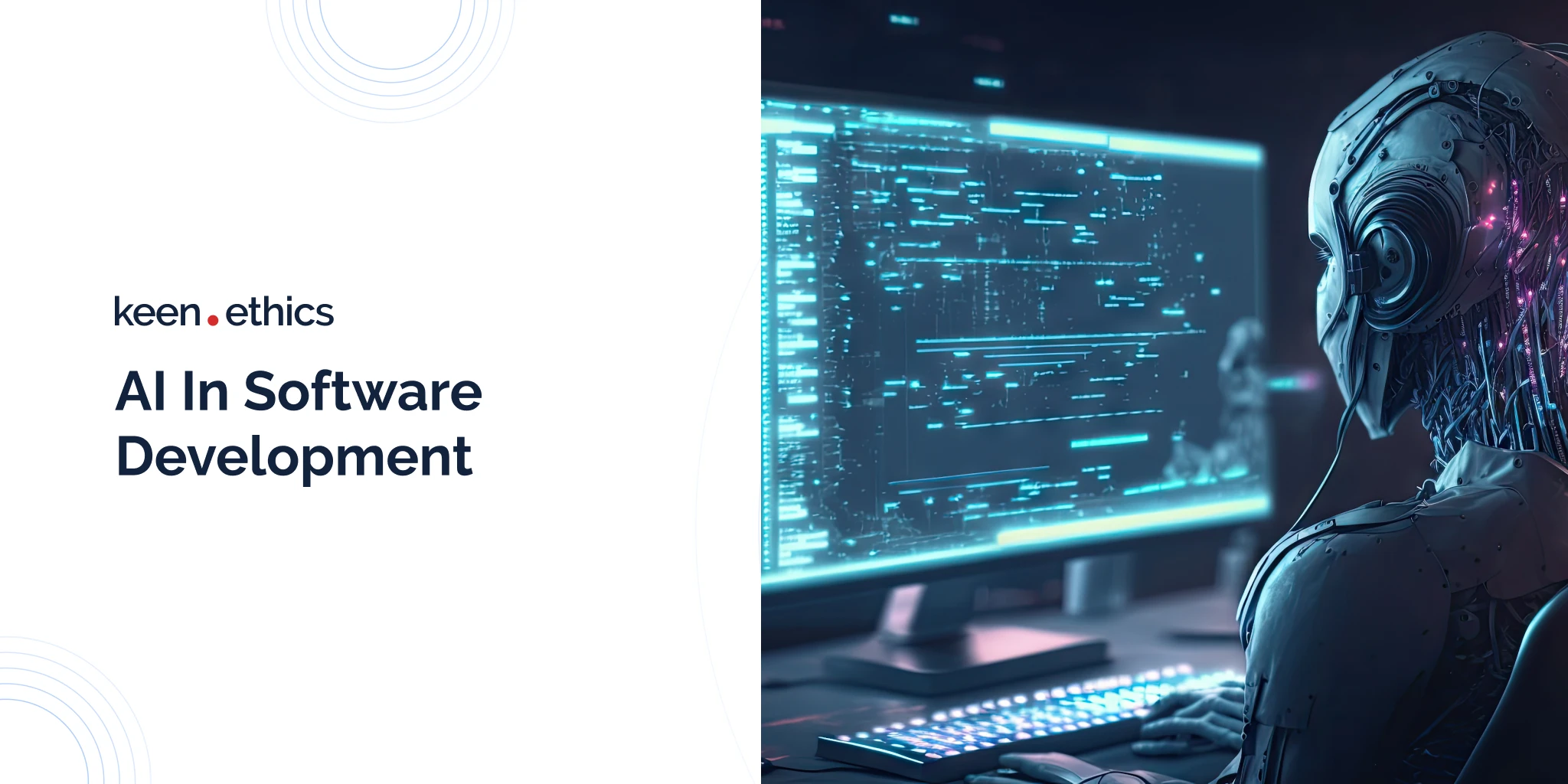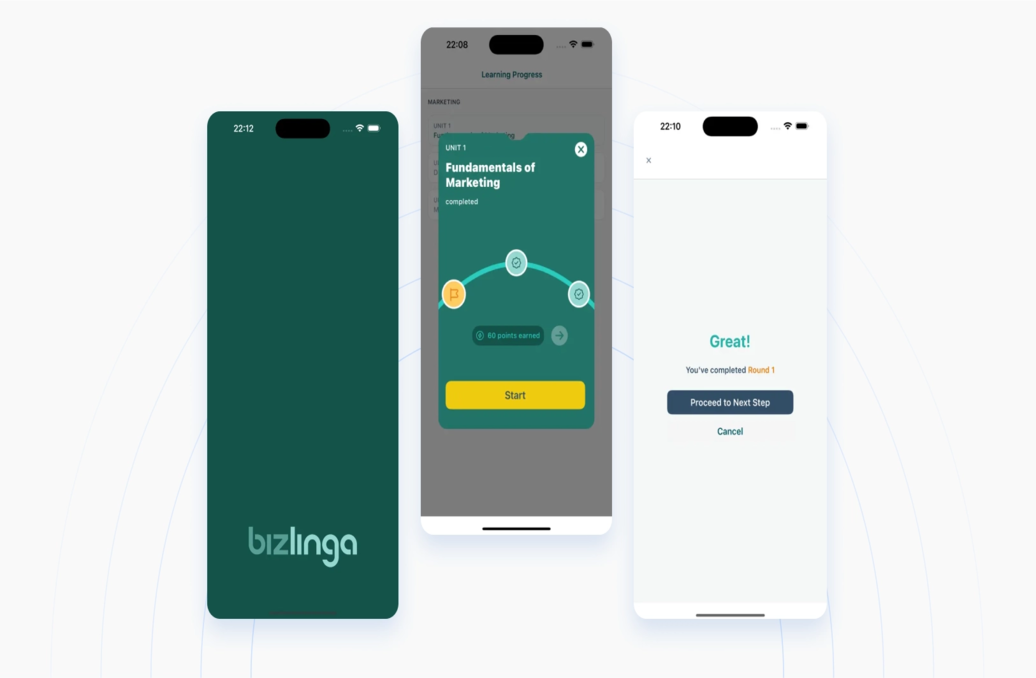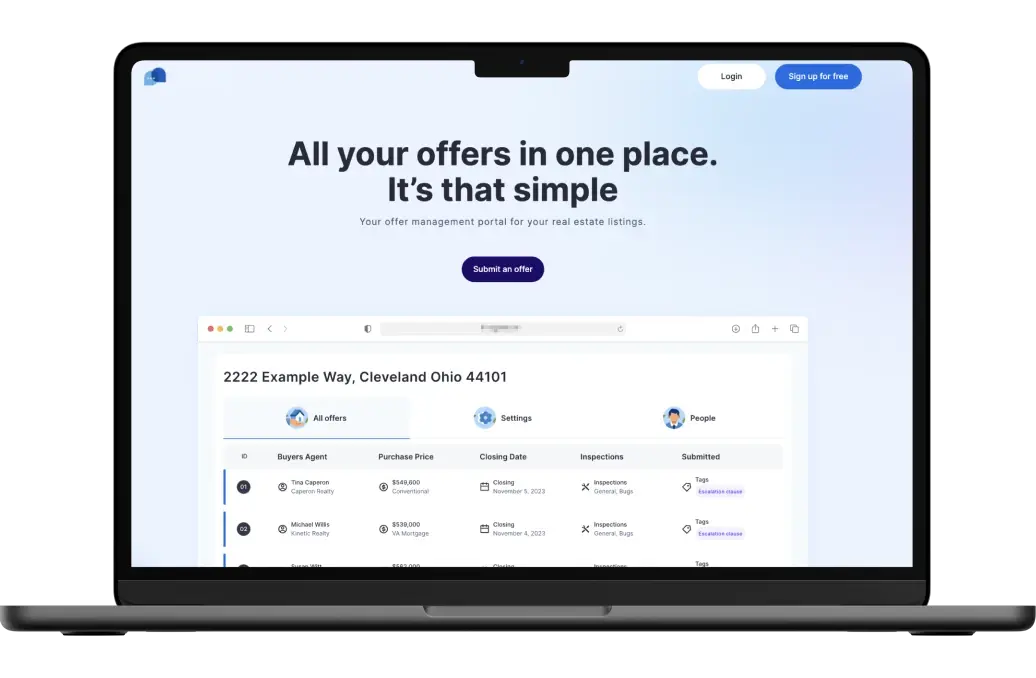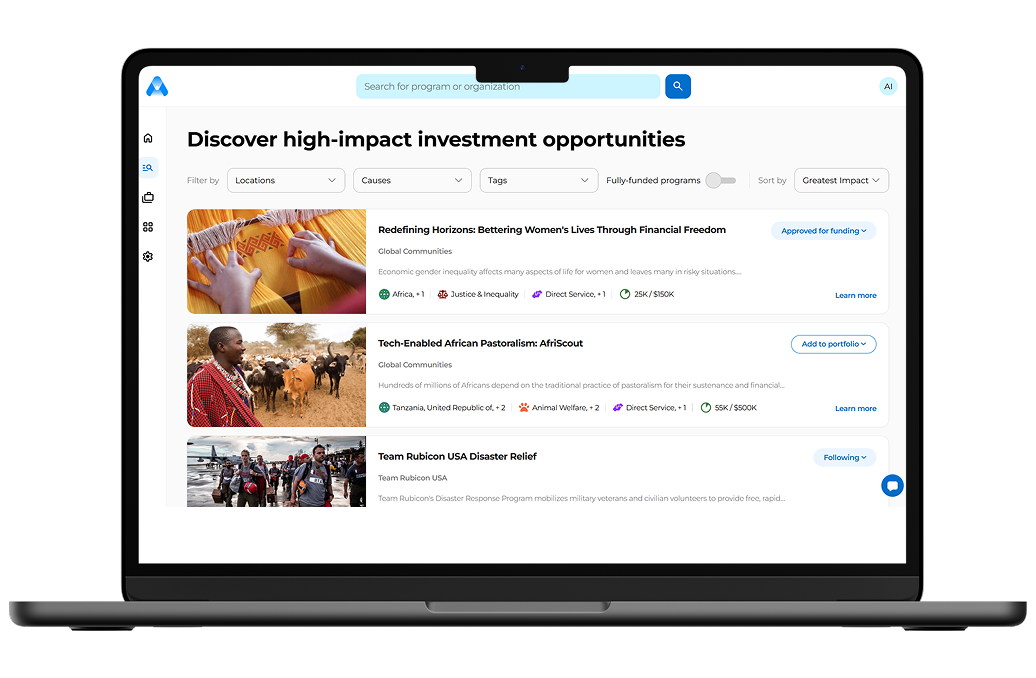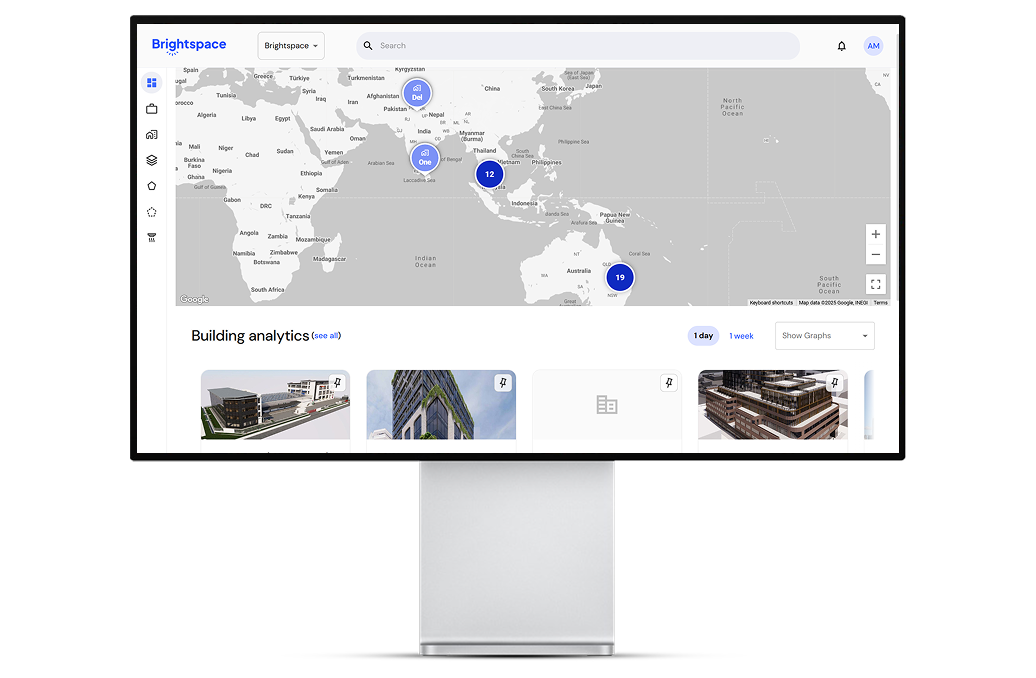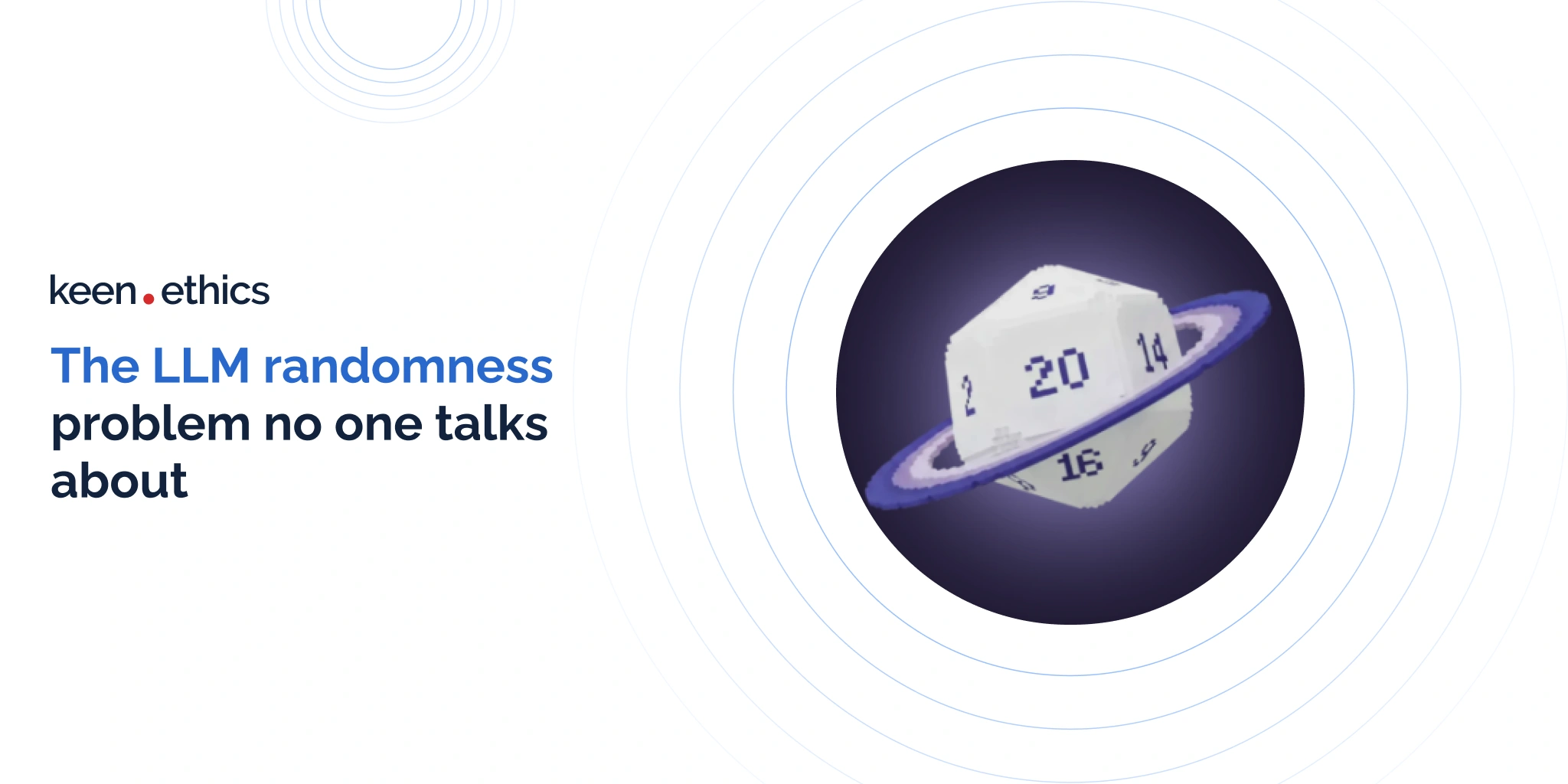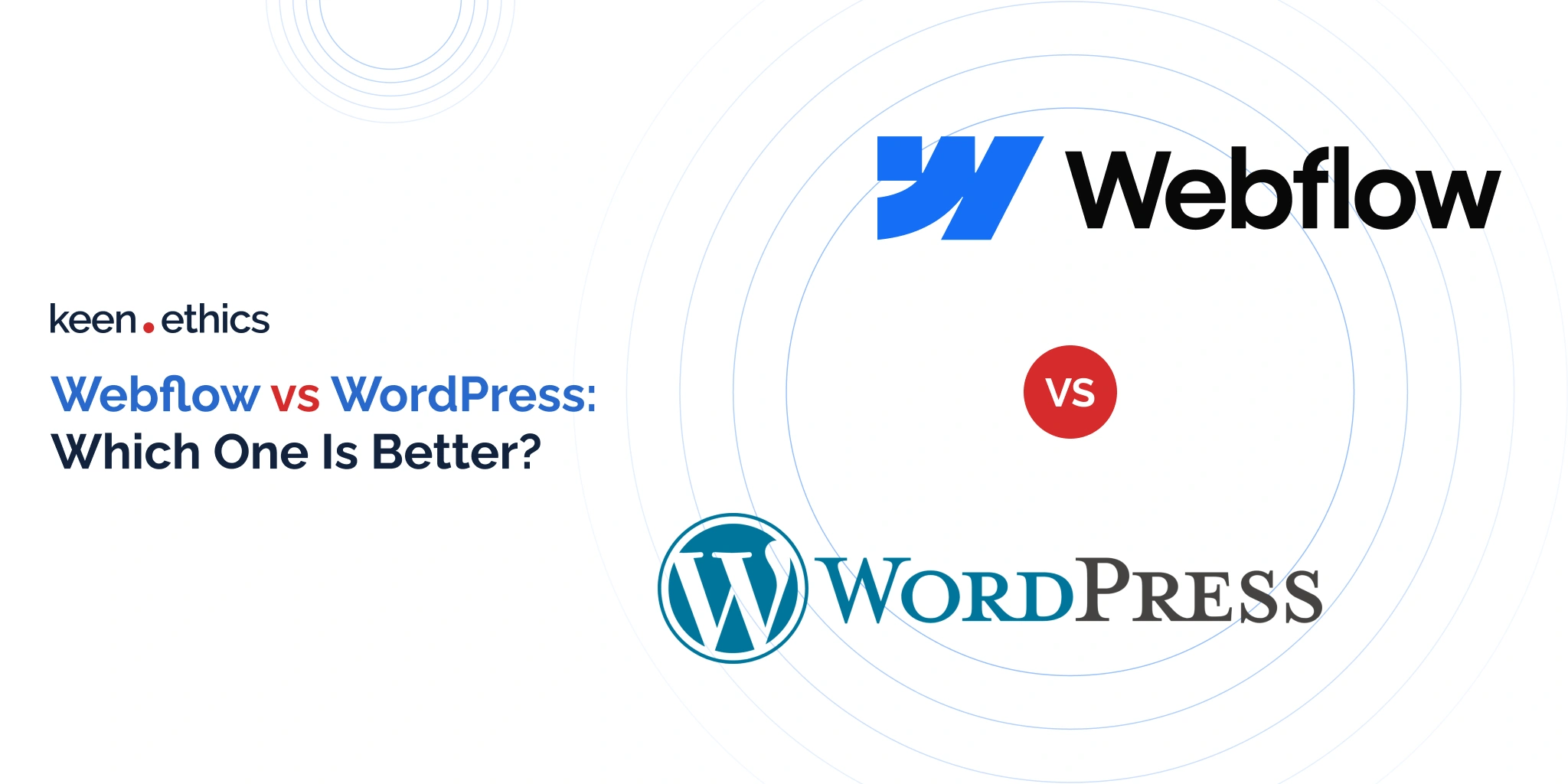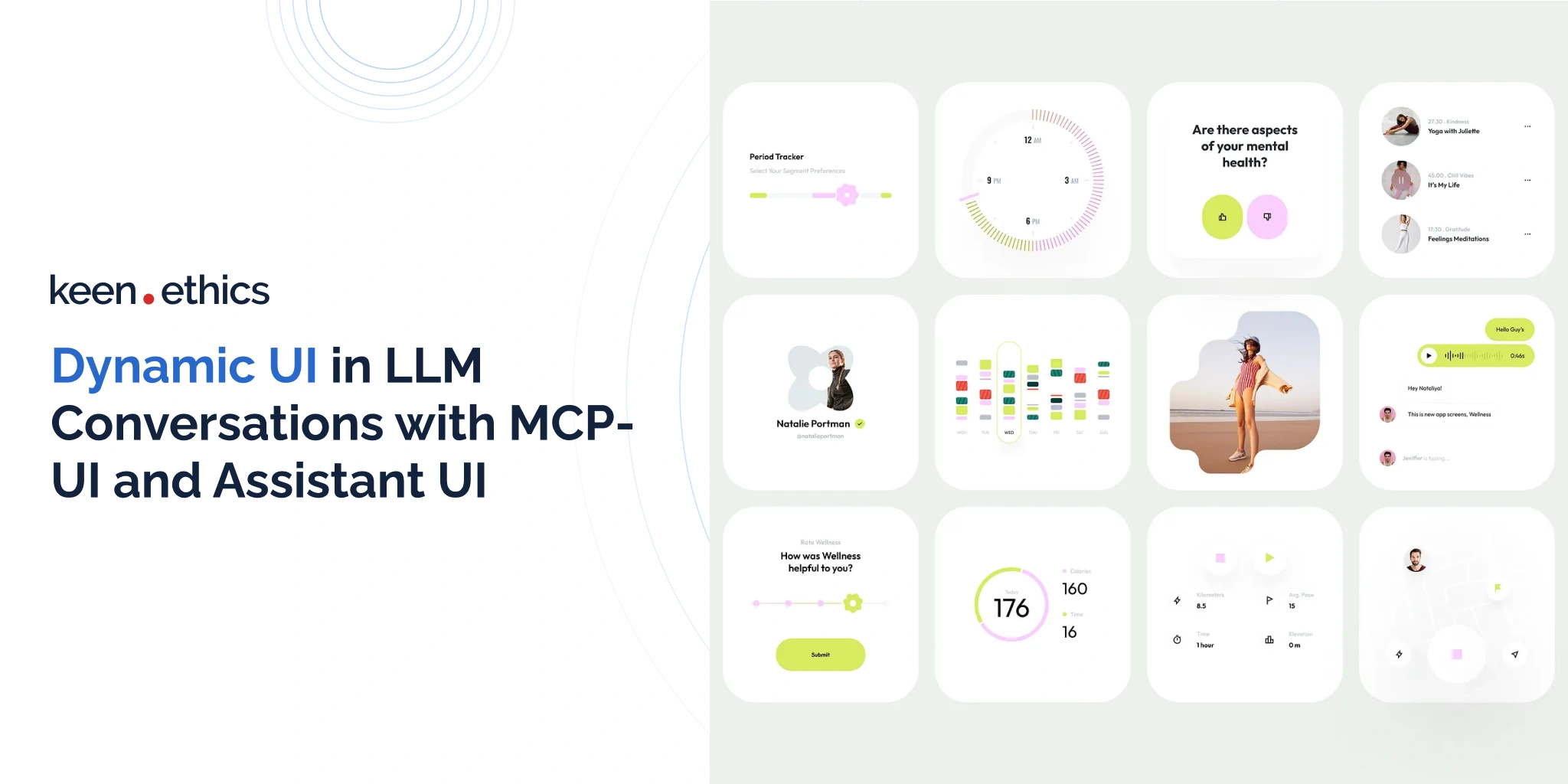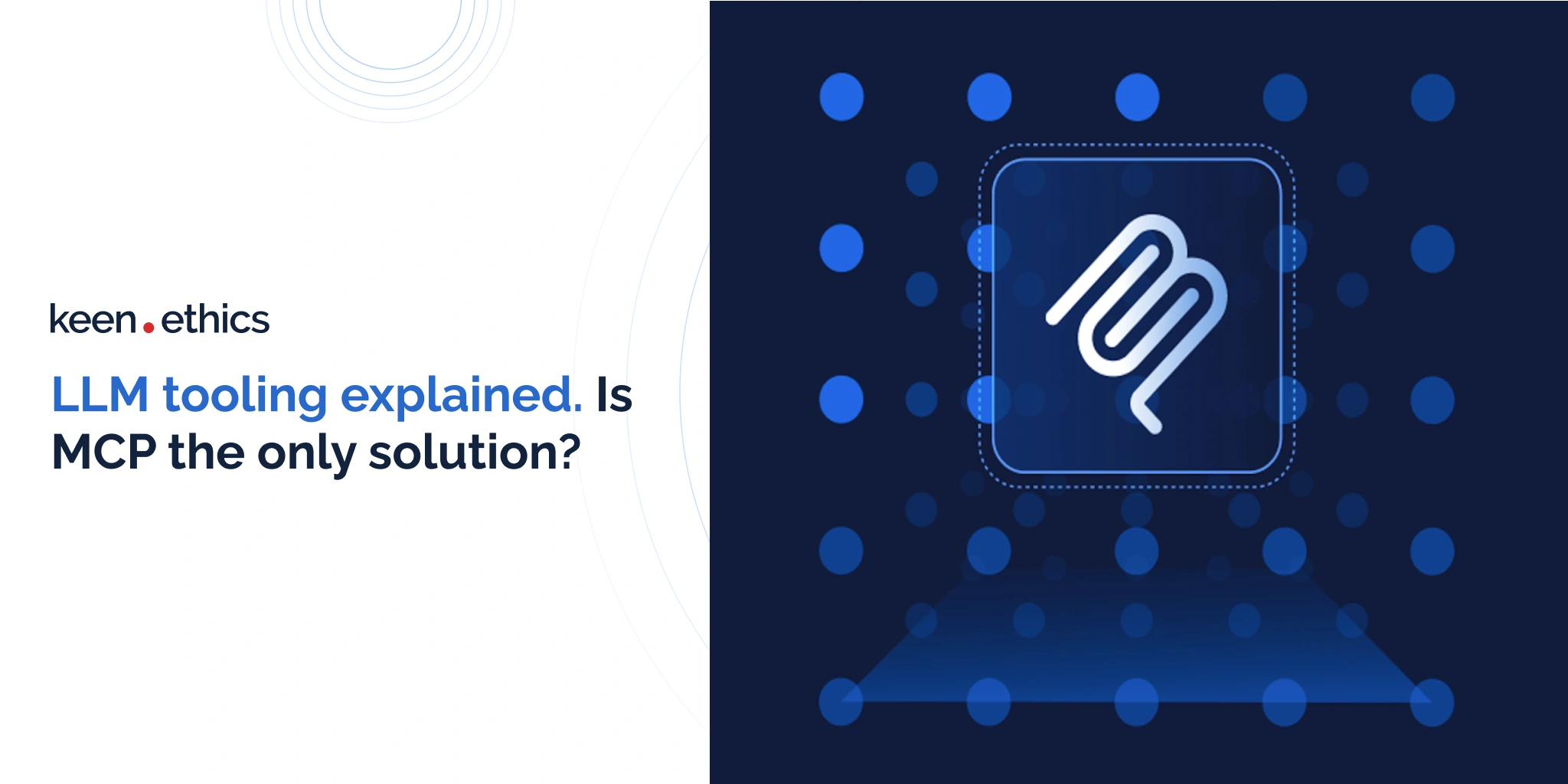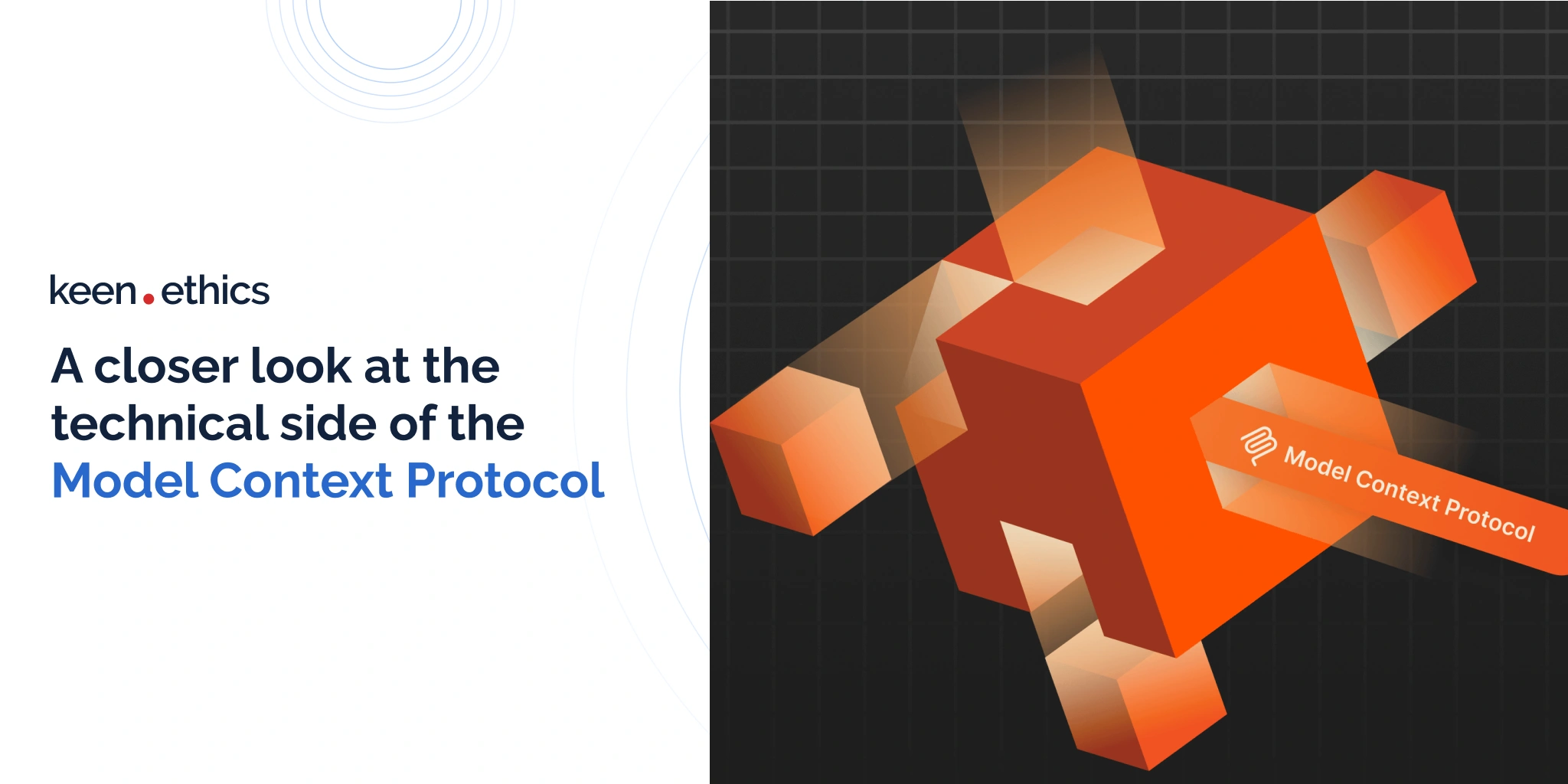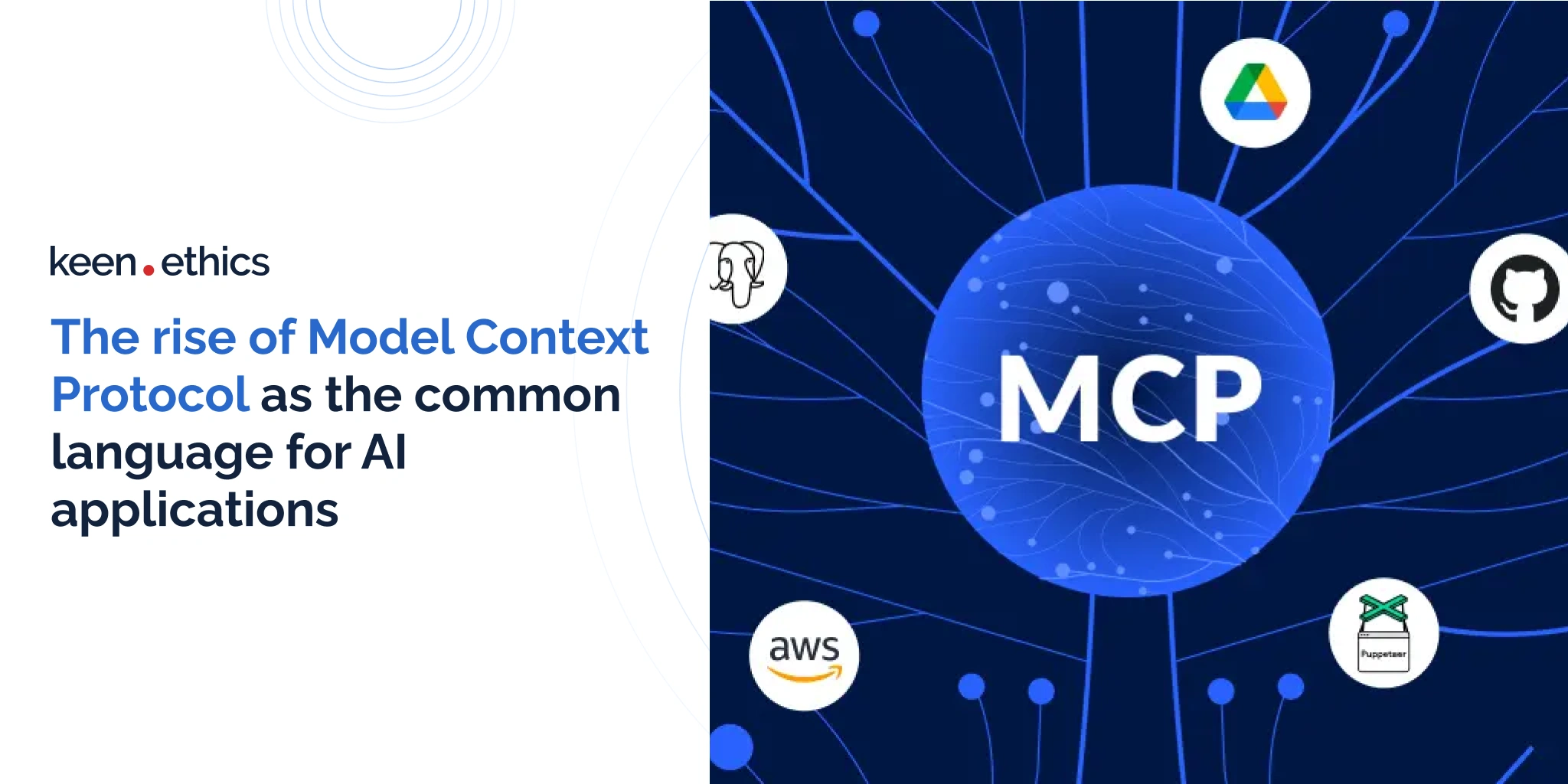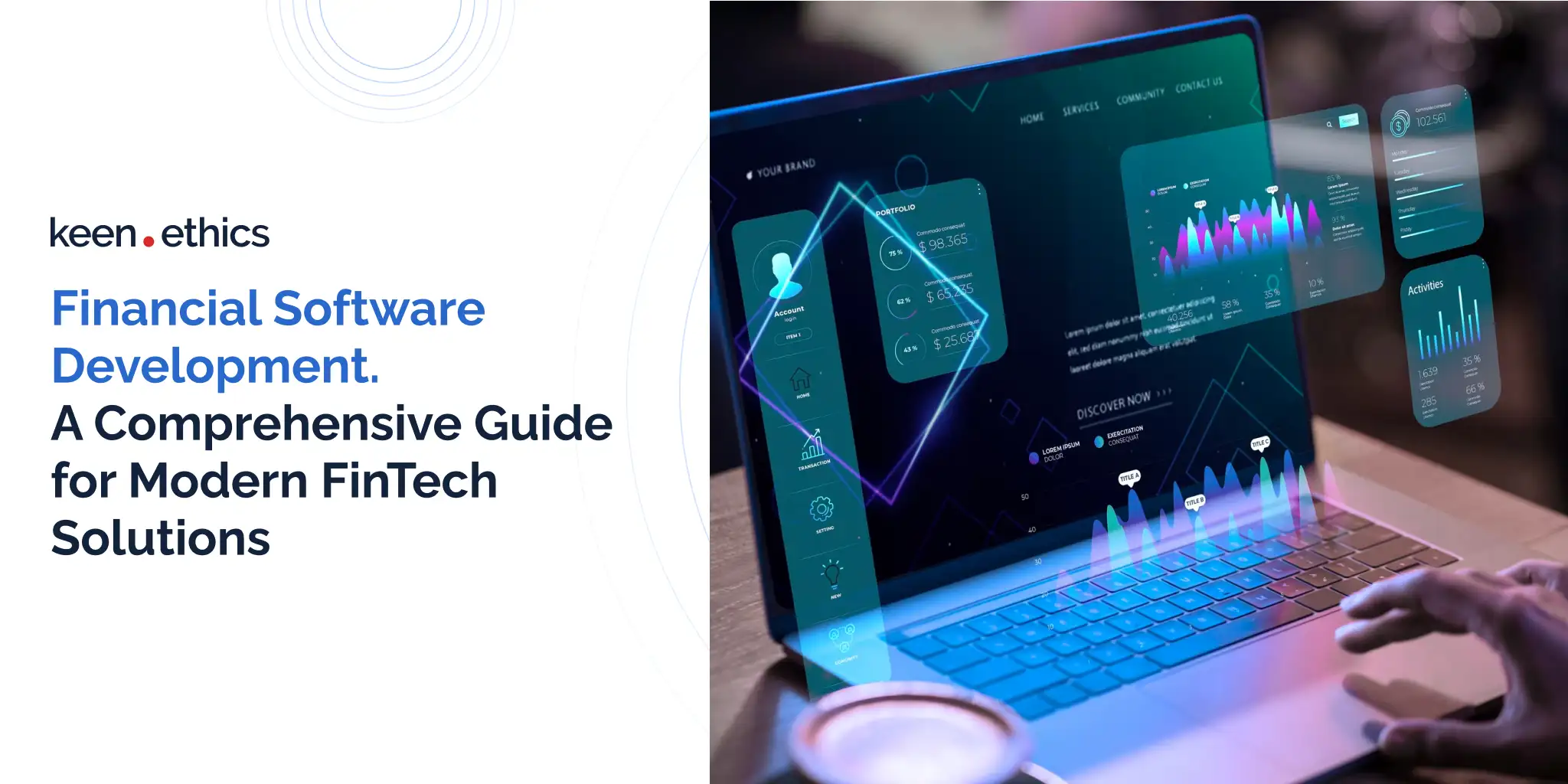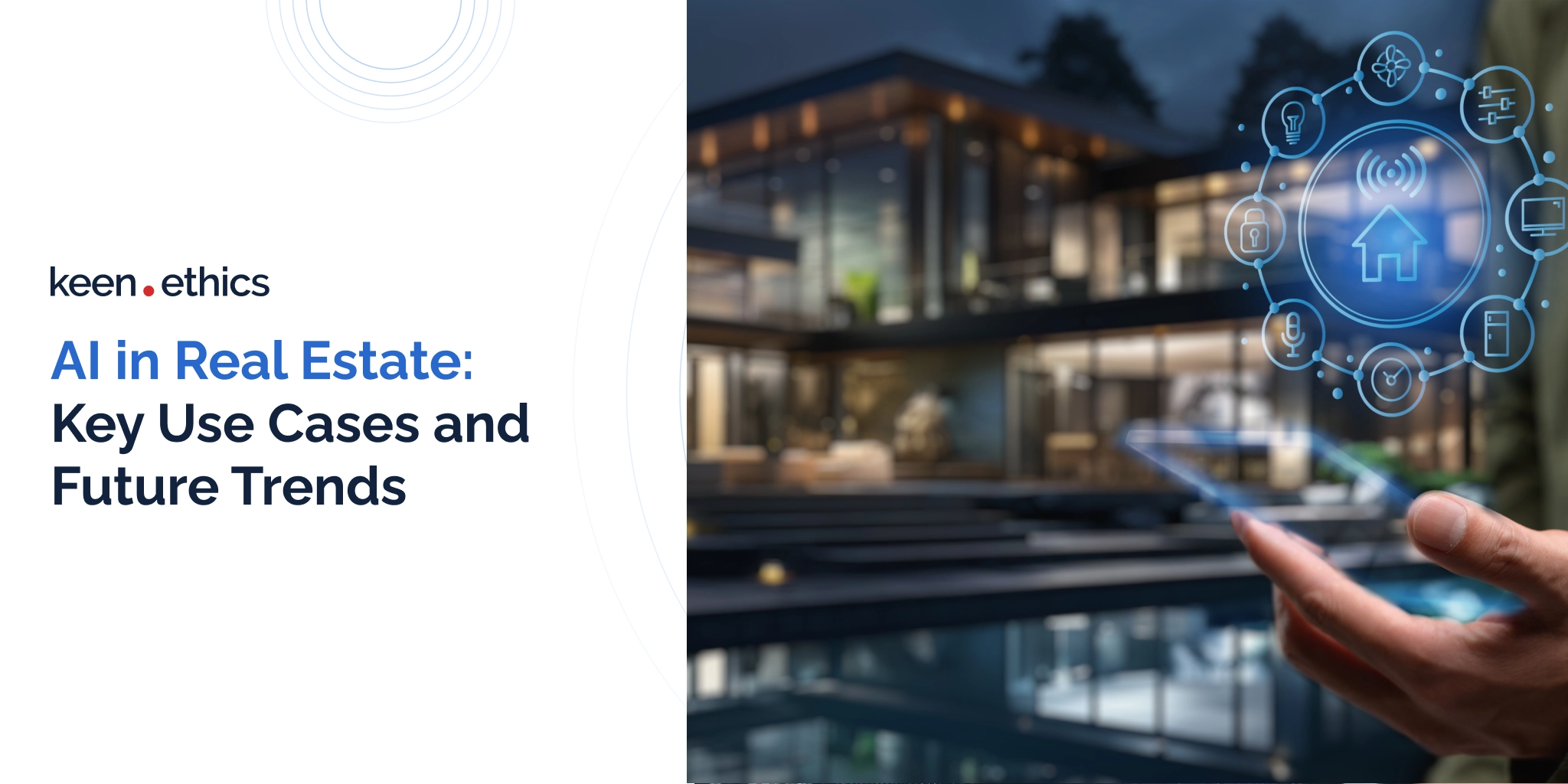AI will soon revolutionize software development. Let’s review how this technology has already transformed the field!
I. Introduction. Two Ways to Discuss AI: Prophecy-Making vs. Realism
Artificial intelligence is among the most discussed topics these days. Some expert opinions on it are optimistic. They claim that the technology will bring about an unprecedented age of prosperity. Many other discussions include prophecies of doom. For example, Sam Altman, the head of OpenAI, one of the largest AI development organizations, wants to create an international committee for overseeing artificial intelligence.
In our opinion, both sides of the discussion are unreasonable. Karl Popper, a major 20th-century philosopher of science, used to proclaim that any attempts to predict the future are irrational. Why? We can’t predict the direction in which technologies will develop. Science fiction from the 1950s looks comically outdated today. Science fiction of today will look similarly obsolete in 50 years. One thing is sure: the future will find many ways to shock us. But does this mean we should stop talking about AI? No! It exists today, and we can come up with various exciting applications for it. For this reason, the critical goal of this article is to explore the concept of AI in software development as it is rather than as it should be.
II. Artificial Intelligence: Definition and Application in Software Development
Our refusal to entertain futuristic predictions concerning AI may seem strange. After all, it’s conceivable that an intelligent machine can, for instance, rebel against humans. What’s the problem with this thinking? There are different AIs. Current AI in the form of ChatGPT is far from Skynet or Hal 9000.
We must solve the real challenges presented by AI. Trying to imagine difficulties caused by non-existent technology is pointless. Ultimately, we aim to analyze real AI rather than imaginary technologies.
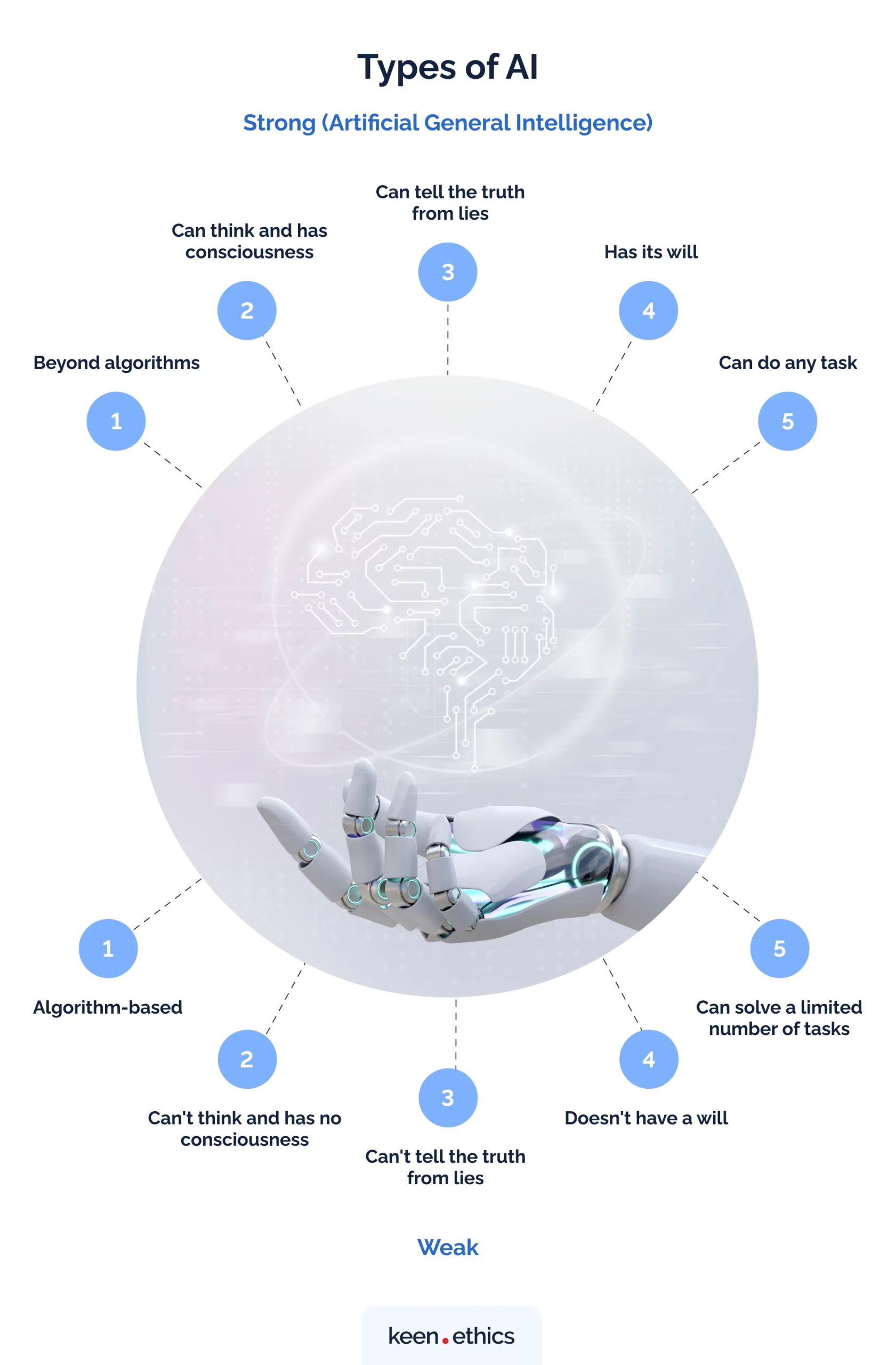
A. Definition of Artificial Intelligence (AI)
Let’s start with a definition of AI. When people hear something about AI, they immediately think of Terminators or SHODANs. In reality, such representations cover only a tiny part of what AI is. In our opinion, you can’t correctly define AIs if you don’t distinguish between their different types. So, here are the two key types of AI we should consider:
General AI or Artificial General Intelligence (Strong AI)
This system performs any task as well as a human does. Its key characteristic is human-like intelligence. AGI can learn any process and create new knowledge.
Today, these AIs are purely theoretical. Most likely, they’ll need consciousness (subjective experiences) to function well. What’s the issue here? We don’t even know how consciousness appears in humans. Humans have unique experiences, qualia, that can’t be explained by physics or chemistry. This is the so-called hard problem of consciousness (its author is David Chalmers).
Until we solve this problem, AGI will likely be impossible. This is also why we don’t fear HAL9000s or other Skynets. We don’t even know how to create them in the first place, after all. More importantly, we can only speculate how such systems would think.
Restricted AI (Weak AI)
Still, the difficulties facing Strong AI don’t mean that AI is impossible. Some algorithms go beyond conditional behavior (if… then). They can learn a lot from data and then produce new outputs. In short, there are self-learning algorithms that train themselves to do specific tasks well. Yes, they aren’t conscious, but they still do impressive things.
A significant example of such an algorithm is GPT 3.5. This is a so-called Large Language Model. It analyzes tremendous amounts of human text to make contextual predictions. What do we mean by that? Imagine you ask ChatGPT to continue the phrase “I…” in a romantic context. Using statistics, it’ll likely say, “I love you.” That’s how this model works. Obviously, the scale is much larger, but the approach obeys this simple rule.
Weak AI demonstration
Some of our readers may say: but this isn’t AI if it can’t think! What’s intelligent about those platforms? We’ll let ChatGPT 3.5 convince the critics personally. Here’s its answer to the question, “What are you? Describe yourself!”:
“I am ChatGPT, a computer program based on the GPT-3.5 architecture developed by OpenAI. I’m a form of artificial intelligence known as a language model. My primary function is to understand and generate human-like text based on the input I receive. I do not possess consciousness, emotions, or self-awareness. Instead, I use patterns in the text data I was trained on to provide responses to questions and engage in natural language conversations.”
Isn’t this impressive? If that’s what a weak AI is capable of doing, imagine how powerful the strong one will be!
Differences between weak and strong AI: A summary
Let’s summarize the differences between weak and strong AIs. Here they’re:
- A weak AI is a self-learning algorithm. A strong AI goes beyond algorithms.
- A weak AI doesn’t think and has no consciousness. A strong AI can think and, most likely, possesses human-like consciousness.
- A weak AI can’t tell the truth from lies (ChatGPT 3.5 hallucinates, for example). A strong AI can tell the truth from lies.
- A weak AI doesn’t have a will: it needs humans to start work. A strong AI has its own will: it doesn’t need humans to start work.
- A weak AI can solve only a limited number of tasks. A strong AI can solve any task that a human can solve. For instance, ChatGPT is inefficient at math because it’s a text prediction algorithm. A strong AI, in turn, won’t have any limitations. It’ll solve math problems, write poems, and perform psychological consultations as well as a human does.
Now that this comparison is over, let’s also agree on definitions. When we refer to AI, we talk about weak AI.
B. Explanation of how AI can be used in software development

In our opinion, AI (in its weak form) has multiple applications in the modern IT sector. Here are some ways to use it:
Coding capabilities
1) Automated code generation. AI realistically predicts simple code patterns. We know that modern GPT models produce functioning apps. They aren’t optimal and may require editing, but the generation speed makes up for those issues. In this light, AI is a perfect tool for stopgap code or optimizing repetitive tasks.
2) Code review and quality assurance. Modern AIs are pattern-oriented. This means they’re great for analyzing vast masses of code for irregularities. You can show AI some examples of high-quality and low-quality code. Based on this information, it’ll then find strong and weak coding practices in any app. The impact of this innovation on testers will likely be tremendous. After all, they’ll be able to automate code reviews even further.
3) No-code solutions. As we’ve mentioned before, AI platforms like ChatGPT can create code. What does this mean? They’re also great for non-developers. How exactly? A manager can provide their requirements to an NLP platform and then get functioning code for their idea. In this way, non-coders will finally receive a framework for visualizing their ideas quickly. The ability of modern AI to produce images is also usable here. If you require design examples, an AI can quickly outline them: platforms like DALL-E exist for this goal.
Assistance for coders
4) Predictive Analytics. A big problem for many teams isn’t coding itself. They also have to organize themselves properly. AI can analyze the past patterns of behavior in an IT firm to make predictions on its future progress. Using this data, it’ll be possible to deliver realistic project estimates. AI will analyze code complexity, individual performance, and even potential roadblocks.
5) Natural Language Processing (NLP) for review analysis: A significant difficulty with collecting user feedback is its volume. To analyze 1000 user reviews, you’ll need a separate analytical team. Natural Language Processing (NLP) platforms can resolve this challenge once and for all. A platform of this type can analyze gigantic texts and find patterns in them. All you’ll have to do later is review the patterns and make conclusions from them.
6) Concept teaching: finally, we see AI as a perfect teaching tool. The key constant in modern IT is change. New programming languages are constantly appearing on the market. In this situation, keeping up with the progress may be challenging. AI is an excellent tool for showing the basics of new programming languages and frameworks. Through it, coders will quickly get high-quality examples of using the presented platforms. An AI platform can also recognize gaps in knowledge and focus further practice on those issues. In short, AI is a solution to the ever-increasing complexity of the IT field.
III. Advantages of AI in Software Development
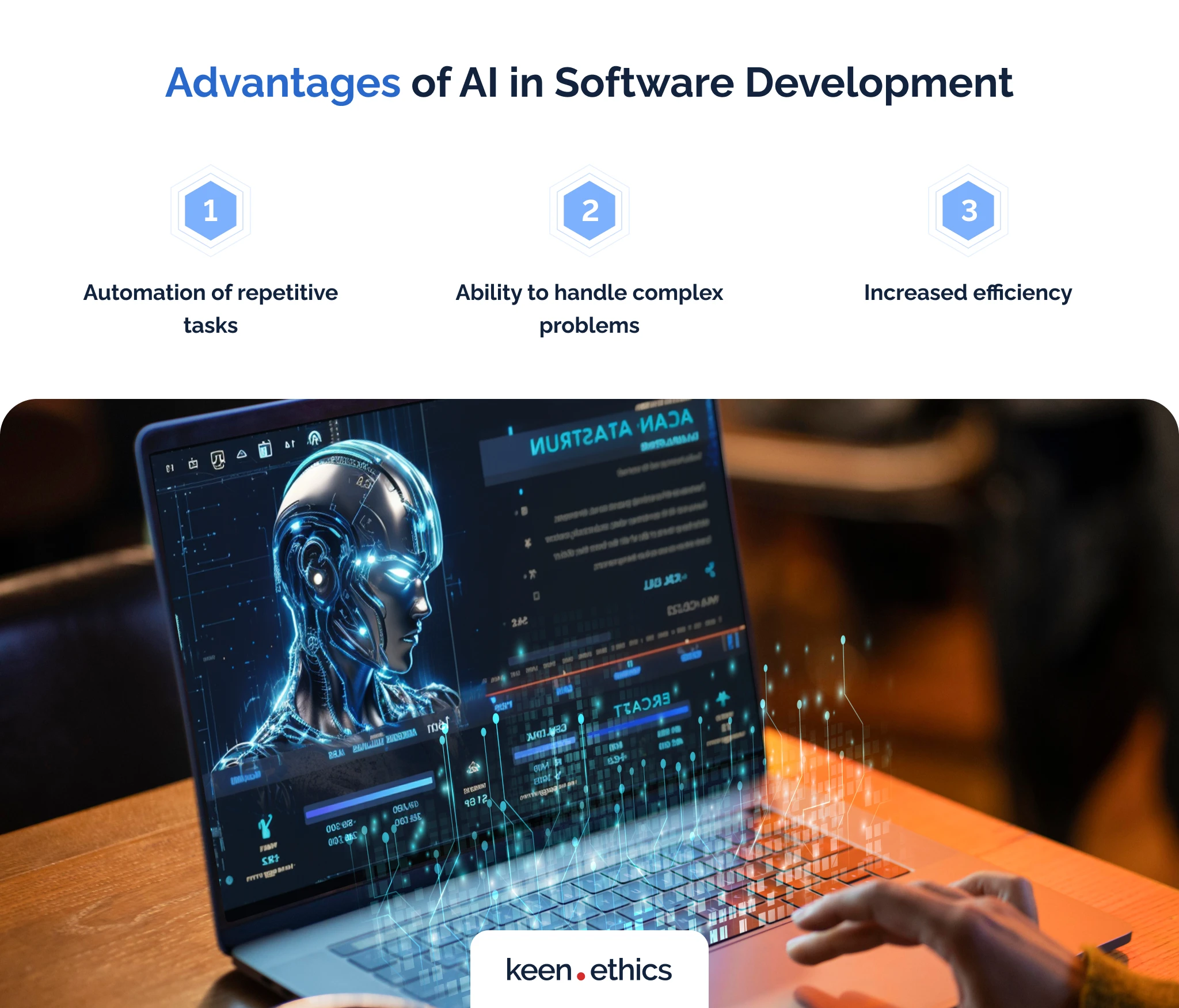
What advantages does AI give to an average developer? Let’s find out!
A. Automation of repetitive tasks
The first significant benefit of using AI is automation. Coding tends to be creative: the developers engineer real apps for their clients. Nonetheless, some tasks in the development process are tedious. What are those?
- Boilerplate code;
- Code refactoring;
- Testing;
- Dependency management.
Modern AI helps optimize those tasks. What can you do to make them less boring? Firstly, an AI is perfect for creating boilerplate code. Boilerplate code involves parts that are reused in many places. For example, these can be various headers highlighting critical dependencies. Give a prompt to an AI, and it will optimize this aspect for you.
Secondly, tools such as ChatGPT are great at transforming content. You can ask ChatGPT to come up with solutions to refactor your code. Not all recommendations from ChatGPT will be great, of course. Some personal interventions will be necessary. Nonetheless, it’s faster to use ChatGPT for code refactoring. Even if only half of its code ideas are great, you will still decrease the time spent on code reorganization. Lastly, AI is ideal for testing your code. Modern tools can review it or even analyze apps in action. In short, AI is a robust tool for accelerating the development process and making it more creative.
B. Ability to handle complex problems
Many people want to use AI for solving complex problems. Let’s review what it can do:
Is AI good for complex problems?
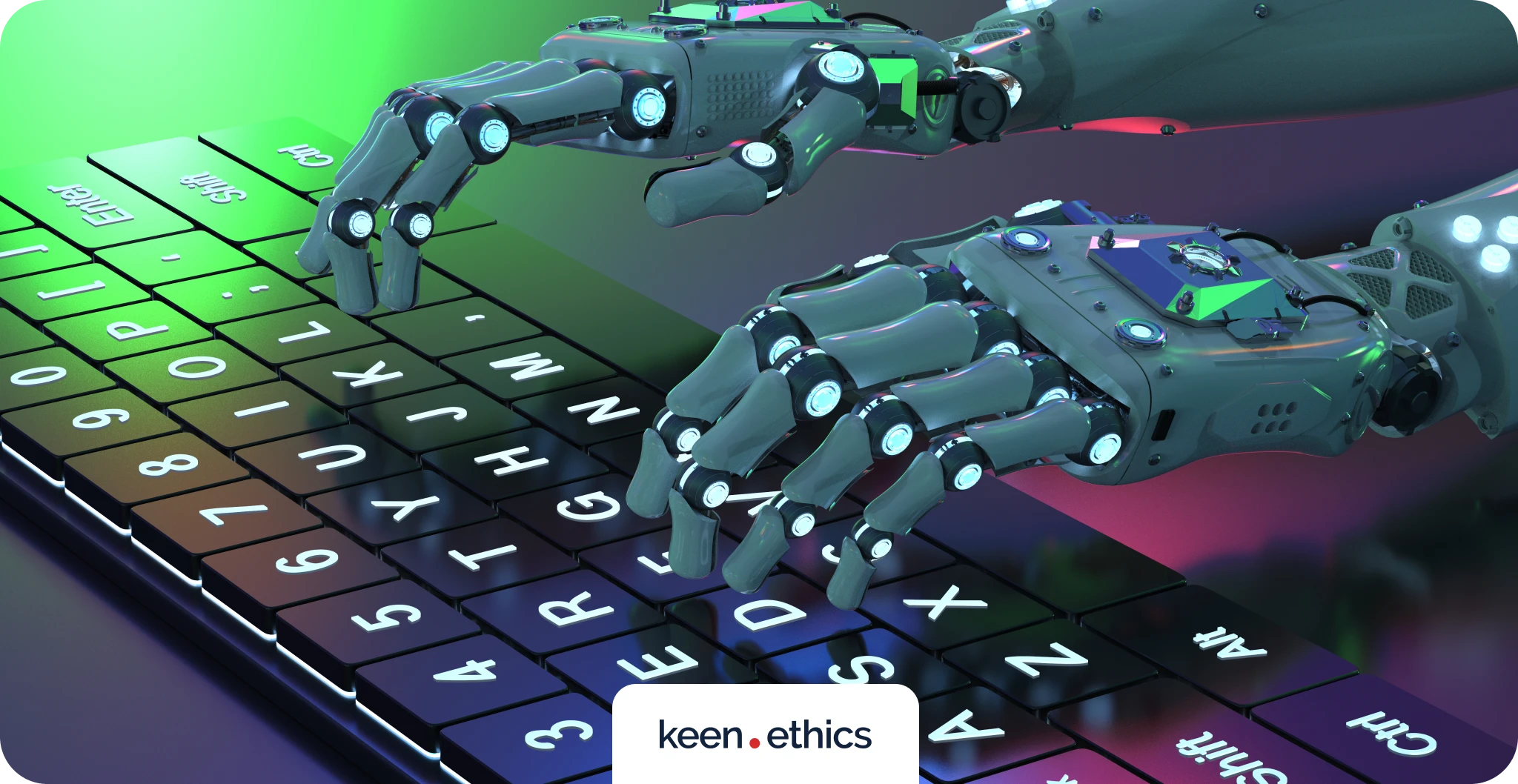
Yes. Modern AI can be called weak from the standpoint of terminology. It doesn’t think as well as humans do. Still, this AI has major advantages over human intelligence in some aspects. Above all, it has minimal memory and processing speed issues. While humans can usually do only one task at a time, a weak AI can do multiple activities simultaneously. It possesses access to the superior calculation speed of modern computers. As a result, this AI has the capability to brute force many tasks. For instance, ChatGPT is efficient at language processing because it relies on statistics. All this makes AI great for handling complex problems. At first, an AI analyzes tremendous volumes of information. Then, it finds connections in this data and offers high-quality outputs. Using this simple algorithm, modern tools do several things well.
Complex problems AI can handle
Here are some complex tasks we know an AI can handle:
- Producing human-like texts and code (ChatGPT, Google Bard)
- Summarizing and explaining text or code (ChatGPT, Google Bard);
- Translating texts (multiple languages) (DeepL, ChatGPT);
- Performing content analysis (ChatGPT, Google Bard);
- Analyzing texts for grammar errors (Grammarly, LanguageTool, ProWritingAid);
- Creating images based on prompts (DALL-E);
- Generating voices based on AI (Murf);
- Offering voice assistance (Siri, Alexa, Google Assistant);
- Rephrasing or refactoring text or code (ChatGPT, Google Bard, LanguageTool);
- Analyzing user preferences for certain content (YouTube, Google, Bing, Netflix);
- Helping establish medical diagnoses (ChatGPT). Note: multiple sources confirm successful diagnoses from ChatGPT. For example, Today news website reports that ChatGPT has managed to establish a correct diagnosis for a user after three years of undiagnosed chronic pain;
- Analyzing financial data and offering recommendations based on it (Cleo, You Need a Budget);
- Performing trading activities for the user automatically (Trader AI);
- Creating self-driving cars and self-directed drones (Tesla);
- Acting as a training system for complex games (chess, Go, and various video games) (OpenAI DOTA 2 bot);
- Mining vast amounts of data and predicting anomalies based on it (ChatGPT, Trader AI);
- Providing language learning help for the users (for instance, through conversations or by predicting proficiency levels) (Duolingo).
With this massive list, you can be sure about two things. Above all, AI genuinely automates various tedious tasks in modern development. More importantly, it’s a perfect tool for creating new solutions. So, AI is both an instrument for development and a solid addition to new projects.
C. Increased efficiency
All the aspects mentioned above allow us to say that AI increases efficiency. How does it achieve this? In our opinion, its influence on productivity has multiple aspects. Firstly, AI, as we’ve mentioned above, reduces repetitiveness. What does this mean for developers? They can spend more time on creative tasks, which are less exhausting than others. Monotony kills productivity. As Shahar Hod from The Ruppin Academic Center, Israel, notes, people performing repetitive tasks lose focus fast. AI solves this problem: it can do most monotonous tasks.
Secondly, AI is an excellent tool for accelerating creative processes. As shown above, it can analyze a lot of data and even engage in conversations. Why does this matter so much? For instance, you can ask AI to analyze some data and then act based on that analysis. Moreover, ChatGPT can easily offer multiple variants of code for your site. That’s a perfect way to jumpstart creativity: even if you have a coder’s block, an NLP (Natural Language Processing) platform can break it.
Besides, AI is vital for speeding up creativity because it may serve as a potent development solution. Today, adding AI to your code is becoming increasingly simple. Integration APIs are openly available for multiple apps. You can simplify the development process by relying on some outside AI product. Ultimately, AI is both a tool for developers and a tool for development.
What does it bring in the end? Its integration capabilities make this platform vital for increasing efficiency.
IV. Examples of AI in Software Development
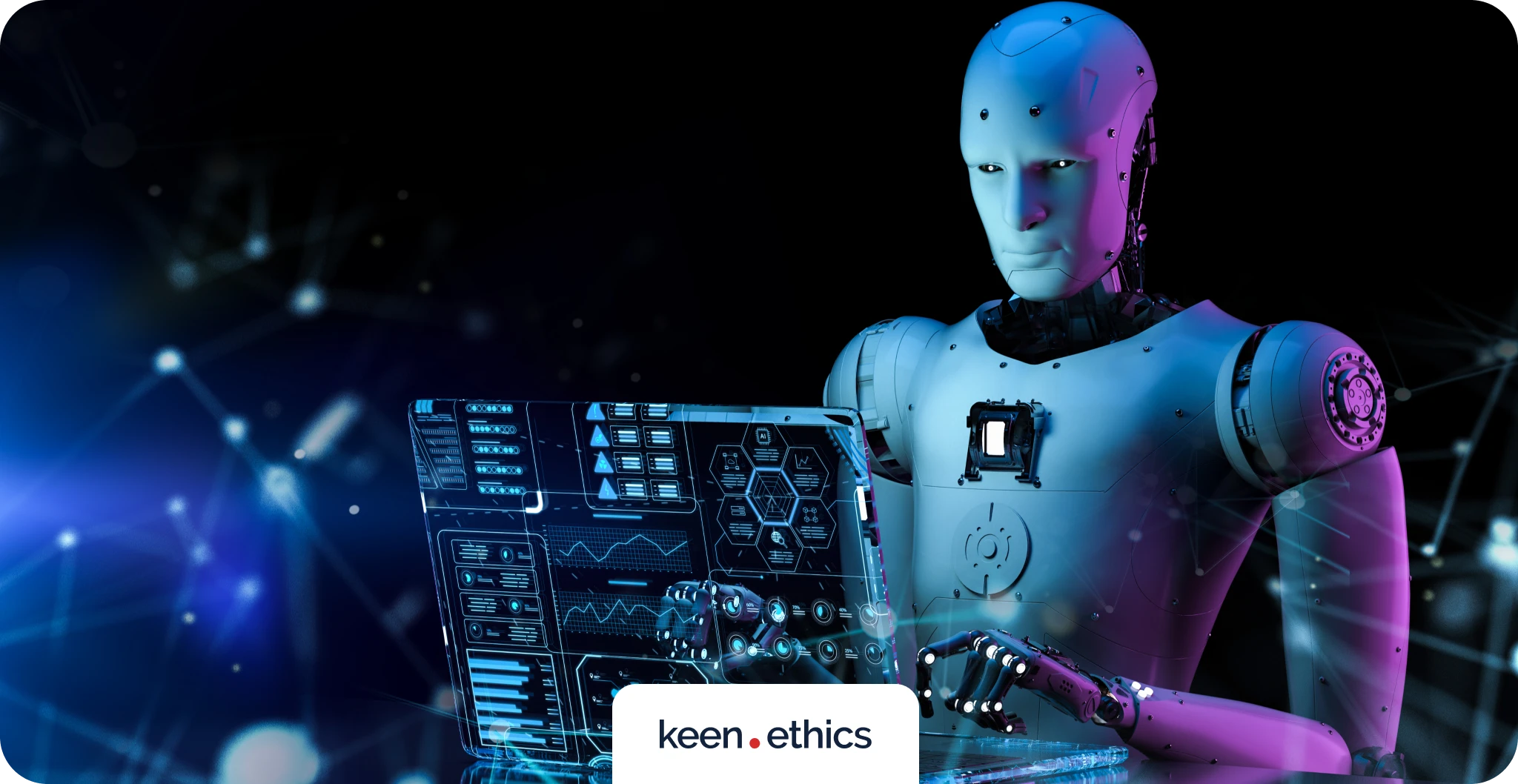
AI in software development plays multiple roles. Here are the main ways in which AI can influence an average worker in the software development field:
A. Natural Language Processing
Currently, the main impact of this technology is evident in natural language processing. Modern weak AI can analyze a vast amount of information to produce human-like texts. What are the key advantages of this technology for software development? Let’s review them.
Generating business ideas
Platforms like ChatGPT can generate various business ideas and check them for viability. They’re great for idea generation and analysis since they contain a lot of information. The databases of Google Bard or ChatGPT can already have data on your specific idea. This is vital for establishing if a business concept is viable or not. AI, obviously, becomes a great brainstorming tool, too. For example, some people use ChatGPT to generate startup plans. When models like GPT start using even more data, their recommendations will improve further.
Explaining code
NLP AI can explain code to non-technical staff. Many software development processes involve people who don’t know how to code. Project managers and designers usually have only a general understanding of coding. Upper management may be more concerned with business management, having no general understanding at all. In this light, NLP AI is a perfect solution. One can send code to a platform like Google Bard and receive coherent explanations. In your prompt, you can ask it to explain code for a non-expert or even “like I’m five.” This approach is ideal for the aforementioned groups. They can now be up-to-speed with development, understanding its key stages. Google openly advertises this aspect as a selling feature for its Bard AI.
Creating new code
Lastly, NLP platforms are great for creating code itself. Computer code isn’t different in design from a traditional human language. It has its syntax and grammar. In these conditions, ChatGPT or Google Bard can create code based on their algorithms. All these platforms need to do is analyze vast amounts of human code. Ultimately, there are some success cases: people actively use AI for development. Andrzej Ryl, the creator of Uncover, a reading app for Android, used ChatGPT to port his app to iOS. He openly admitted that the experience was imperfect. ChatGPT hallucinated a lot. Nonetheless, it managed to offer several high-quality recommendations that allowed an iOS beginner to create a working version of his Android app for iPhones. As Andrzej Ryl claims, ChatGPT is a great “sidekick” and assistant for coding.
B. Automated testing
AI can help with automated testing in two ways. Firstly, it’s useful for analyzing various patterns in human code. For instance, ChatGPT may find potential weaknesses in your UI/UX modules. Secondly, we see AI as an important framework for speeding up test creation. Most automated tests require a lot of code: testers need to be coders at the same time. This factor makes it harder to enter the profession. As a result, a deficit of testers may become a reality in the future. Why would one become a tester if they’re a talented coder? In this light, NLP platforms like Testsigma offer a solution. They can create tests based on user prompts. This low-code framework potentially makes everyone a participant in testing. It’ll make the profession simpler, attracting more people into the field. Moreover, project managers will be able to test their hypotheses fast, too.
C. Automated Code Refactoring
Lastly, we can expect AI to become a strong refactoring tool. As we’ve mentioned before, ChatGPT and Bard can program. If you feed them your code, they can easily rewrite it, too. Why is this important? Code refactoring is among the most difficult coding tasks. You need to combine past functions with better code. In numerous instances, this isn’t easy to do because past code is of high quality. An AI can indeed hallucinate and offer false solutions. However, it can also break the coder’s block by providing some non-conventional ideas. Not all of them will be great. Still, they can serve as a perfect collection of suggestions for future development. With the development of AI, automated code refactoring will be growing in strength. Platforms like Refact.ai will likely be taking away more and more responsibilities from average developers.
V. Challenges of Using AI in Software Development
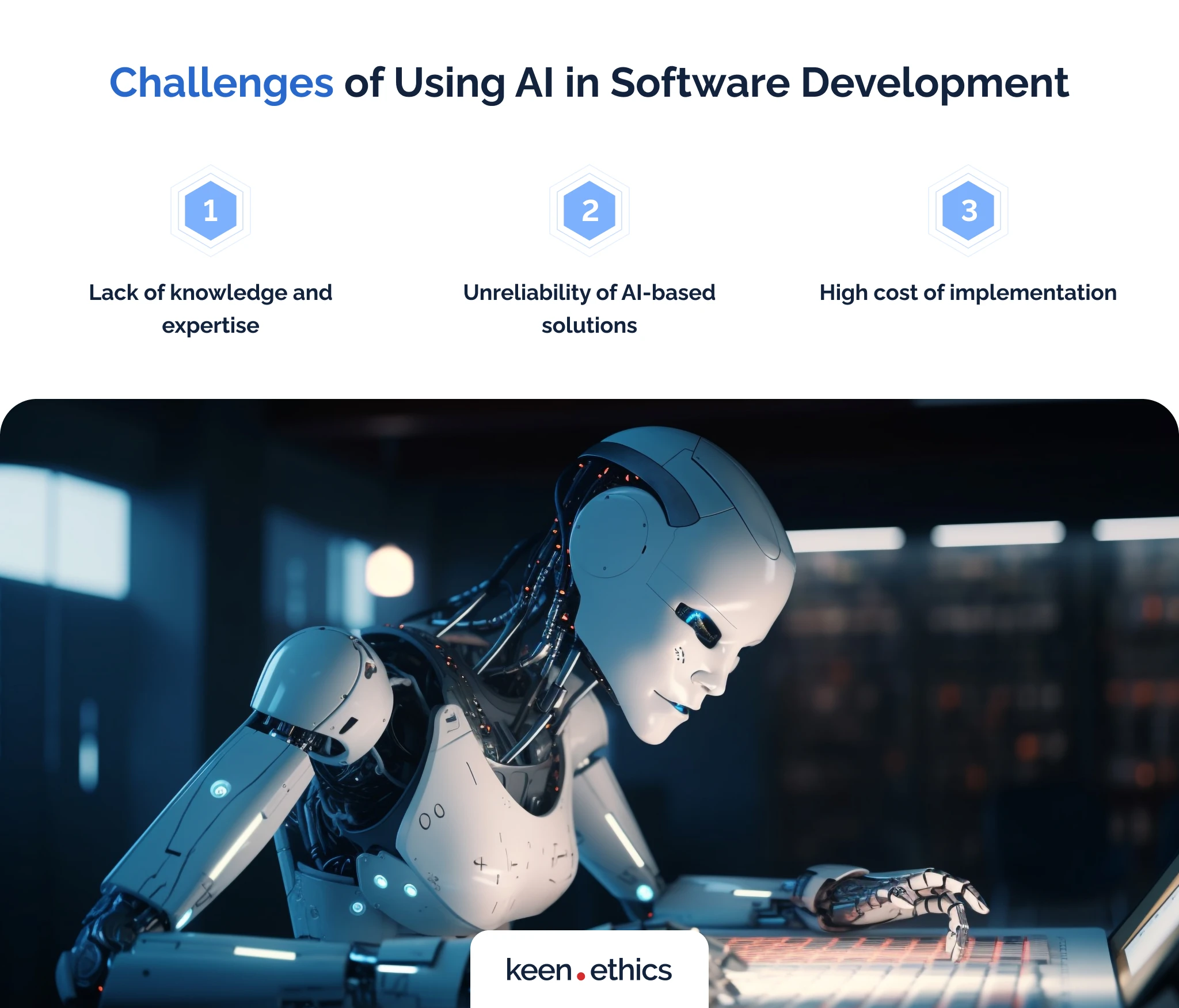
AI (even in its weak form) promises a revolution in software development. Well, as history shows us, all revolutions have their costs. In this section, we’ll look at the challenges preventing many companies from using AI in software development.
A. Lack of knowledge and expertise
When mapping AI in the software development life cycle, we can’t ignore the mythological thinking surrounding this technology.
Two standpoints: Pessimism and optimism
Some people believe that AI is all-powerful. For instance, Ray Kurzweil, an American inventor, claims AI will overtake humans in all domains within 20 to 30 years. Others are much more skeptical. Ragnar Fjelland (Center for the Study of the Sciences and the Humanities, University of Bergen, Norway) claims that general artificial intelligence is impossible. Most likely, we’ll reach the limits of modern weak AI soon, too. What do these standpoints from two competent specialists showcase? In our opinion, one thing: most people don’t know what to do with AI. We can’t predict its influence.
Discovering AI
What does this mean for us? Modern developers will have to discover the uses of AI in actual practice. Yes, there’s some interesting knowledge on the Internet. Nonetheless, many things in the AI field are yet to be discovered. This is a significant challenge for many firms. We lack understanding and expertise concerning AI. Modern businesses will have to spend time acquiring them. Countless experiments will be necessary to find out how this innovation works.
All this creates major long-term risks for the early adopters. They must test how AI works instead of using it as a proven method of increasing income. Consequently, only the most resource-rich companies will have enough time and money to survive AI-related failures. AI offers great rewards, but this field is also risky.
B. Unreliability of AI-based solutions
Most AI solutions are unreliable. Let’s see the impact of this problem:
Unreliable nature of AI
As we’ve discussed above, modern weak AI can’t think. It uses algorithms to predict human activities. AI and ML in financial software development can yield massive positive outcomes. Using them, one can create great automatic trading platforms, for example. Still, they’ll inevitably hallucinate because human activity can’t be brought down to predictions alone. Humans aren’t fully rational: we perform many bewildering actions that are impossible to predict. Ultimately, CNET’s (a major tech news website) attempt to write texts with AI ended in a scandal. According to CNN, many of the resulting articles had major factual errors. Similar issues befall modern code, as Andrzej Ryl notes.
Two extreme solutions: How to avoid them
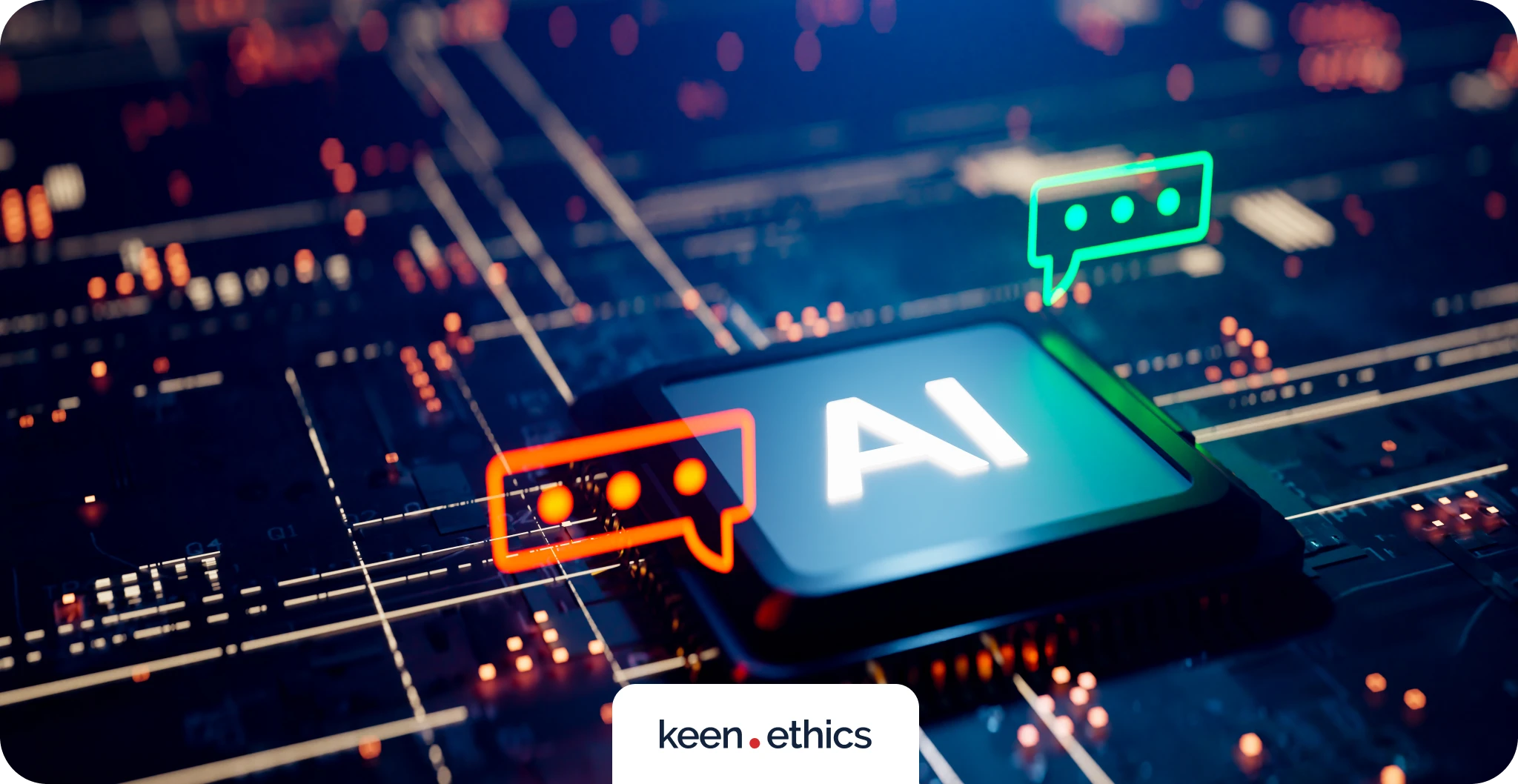
Ultimately, this factor can lead to two extreme solutions. On the one hand, managers can rely too much on AI and produce low-quality code. On the other hand, they can completely abandon AI and lose many hours on repetitive tasks.
A correct approach is to use AI for specific tasks. For example, it’s excellent for boilerplate code and refactoring but suboptimal for creating advanced graphical features. Here, we return to the issue of knowledge once again. Only testing can tell where AI is efficient and where it’s better to use human input. One thing is clear: we should avoid excessive AI optimism and pessimism. Both can become significant barriers to AI implementation.
C. High cost of implementation
Above all, modern AI is costly to implement. The problems here come from multiple directions.
Costly training
You need to invest funds in training. Courses that teach how to apply AI in coding use a lot of research and, as a result, cost a lot too. For instance, an introductory course about AI prompt engineering costs 44 dollars per person on Udemy. It has only 5 hours of video and one article inside. Moreover, coding isn’t the only theme of this course: it discusses copywriting too. For a company with ten developers, such a basic course can cost 440 dollars. More advanced knowledge will require greater investments. They’ll also have to be constant as new AI tools appear on the market often. Expect to spend thousands of dollars per developer to maximize AI benefits.
Process transformation
Active AI use in software development also transforms the skill demands for the coders. As we’ve mentioned before, modern AI is prone to errors. It’s not as reliable as many people tend to think. If you decide to use AI despite the problems, your coders will have to concentrate on an additional task.
This task is a thorough code review. They must be competent enough to find issues in the AI code fast. Yes, AIs can produce working code for some feature or even a separate app within minutes. Still, some of its parts won’t work well. You need coders with exceptional skills to spot them fast. Otherwise, you run a risk of losing time by using AI. Code analysis may take too many resources.
In this situation, AI will require two new competencies from coders. They will have to possess a higher-than-average attention span. Moreover, their knowledge levels should be advanced, too. Only an experienced and attentive developer will be able to review AI code in several minutes rather than hours. Interestingly enough, AI may lead to a potential increase in coding skill ceilings. Only competent coders benefit from AI.
VI. The Future of AI in Software Development
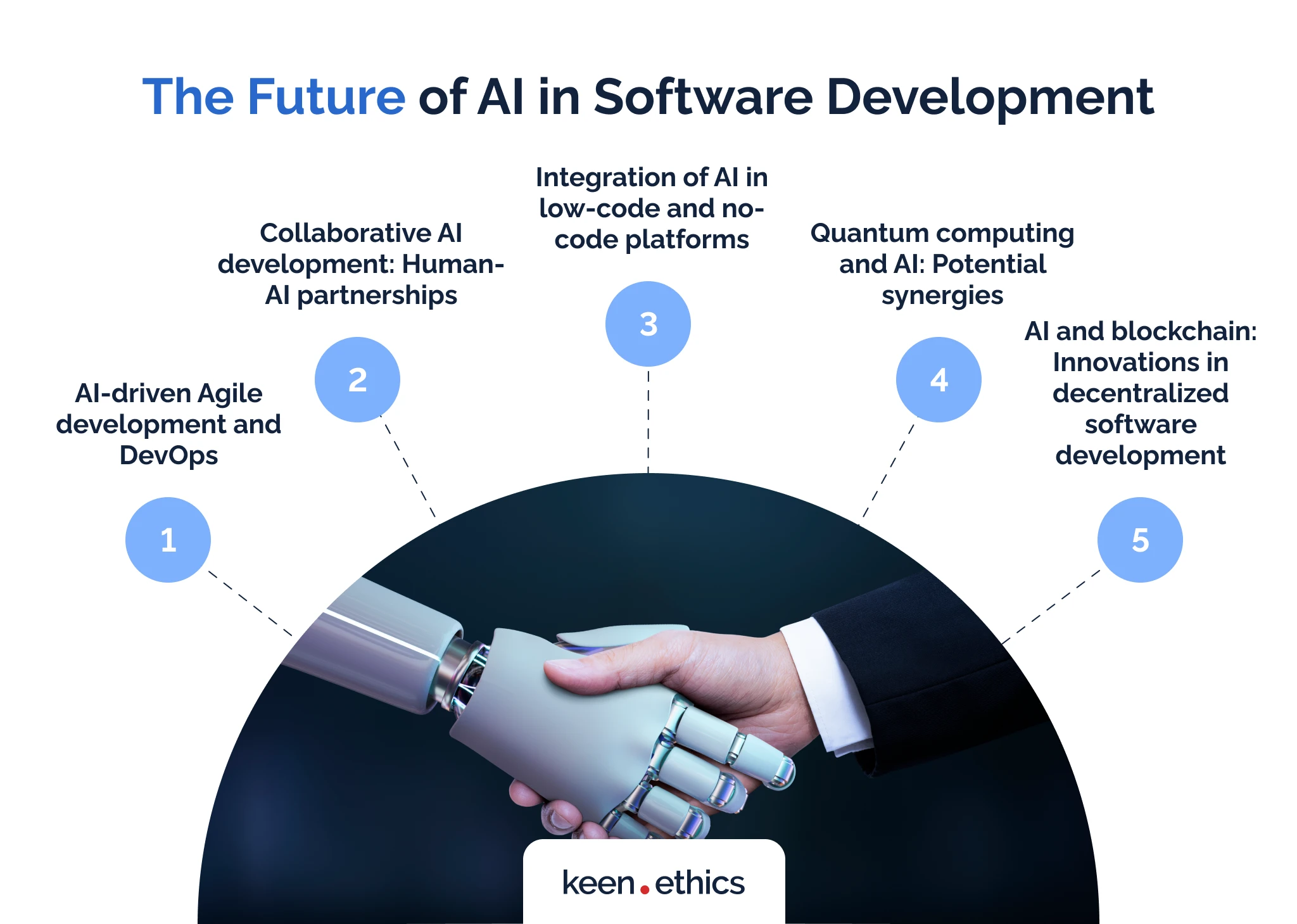
Now that we know what AI is, as well as its benefits and challenges, let’s discuss the future of this technology. In our opinion, it’s bright. Here are some of the potential use cases that will define the coding field in the upcoming years:
A. AI-driven Agile development and DevOps
From this standpoint, AI will have two primary uses: an organizing and an idea-centric one.
AI for organizing
Above all, we expect that AI will assist with Agile development and DevOps by helping organize them. Modern coders have to perform many small tasks during their workdays. Managing them all is difficult. As a result, many firms have problems maintaining their Agile development processes. A common way of handling this challenge is to have multiple meetings a day. Harvard Business Reviews notes that this process leads to even greater chaos.
Two solutions to this concern exist. You can hire more managers, or you can use AI. Modern AI tools are advanced enough to track tasks and even control some of them. For instance, Clickup uses AI to assist with task summaries and organizing schedules. In the future, we expect to see full-scale AI managers. Using prompts from humans, they’ll be able to create and track weekly tasks. Combined with AI testing tools, these tools will even assess code and text quality. This innovation will improve Agile development and make it more orderly.
AI for development and DevOps
Modern systems are already advanced enough to refactor code and write it. We believe that future AI will get even more proficient at these tasks. Where will those capabilities be of great use? Firstly, they will be useful in boilerplate code for average developers. If you need to create a base for your app, something like GitHub Copilot is great.
Secondly, DevOps experts will also benefit from AI a lot. How exactly? Their tasks often include the aforementioned boilerplate code. AI can create it fast, freeing up time for other important goals, such as security tool installation. In short, AI will soon become a major part of all development processes.
B. Collaborative AI development: Human-AI partnerships
In our opinion, cooperation between humans and AI will be symbiotic. AI isn’t going to take away jobs from the developers due to hallucinations and lack of thinking. What it can do is transform the way people approach coding. In the past, developers were mostly lonely in their attempts to create a site or a module. Outside feedback used to come after the development process was over.
Future AIs will act as partners in development. They will complete code for their human colleagues. Moreover, they can test this code automatically and offer vital recommendations based on collective experience. In short, collaborative AI development will lead to an increase in productivity. We expect that AI will be able to offer feedback to clients in live mode. As a result, early testing will be simultaneous with development. Newcomers will learn together with AI. Experienced developers will have a watchful digital friend that can prevent errors.
C. Integration of AI in low-code and no-code platforms
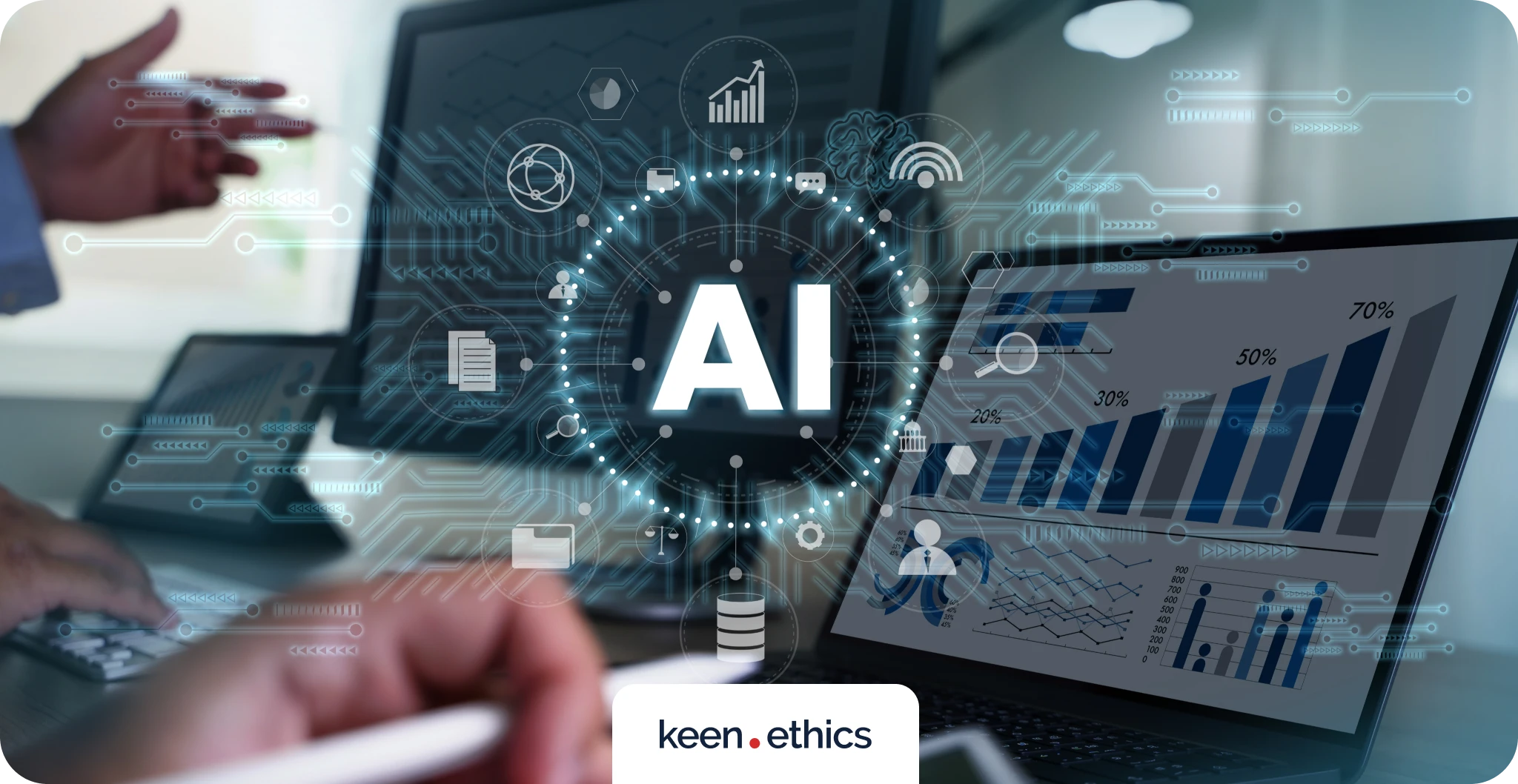
Another vital change we expect is that AI will become a new standard in low- and no-code platforms. Various platforms of this type already use AI. For example, Airtable, a low-code platform for app creation, now has generative AI. Using this feature, its clients can write a prompt with an app description and ask AI to generate code for it. Why is this so important? If a manager needs a prototype for an experimental idea, they can create it without wasting the developers’ time. With this technology, the developers will be able to concentrate on vital features. AI tools will perform the majority of hypothesis testing.
D. Quantum computing and AI: Potential synergies
Quantum computing is much faster than anything modern x86 and ARM devices can offer. Let’s discuss it in relation to AI.
Quantum computing: a technology in its infancy
Most likely, we won’t see even business-grade quantum computers for at least two decades. This technology is still in its infancy today. It requires extreme cooling and consumes a lot of energy. Many quantum systems take entire rooms. Silicon-based computers were at the same level in the 1960s. Even if the development tempo continues, the first quantum Commodores and Spectrums will be developed in the 2040s. Why should we explore this technology if it’s so far away? Primarily because quantum computing is a fundamental technology that will become mainstream eventually. More importantly, its mainstream use will be revolutionary for modern AI.
AI revolution and quantum computing
Moore’s Law is dead: we’ll soon face major limits in our ability to create more powerful silicon processors. Consequently, AI will face significant limitations in its power, too. Quantum computing breaks this trend. With its superior processing capabilities, quantum computers can host unbelievably strong weak AIs. They’re 100 trillion times faster in terms of processing power than supercomputers. In this light, we’ll be able to create weak AIs containing all human knowledge. Yes, they most likely will be unable to think just as modern AIs. Nonetheless, their prediction capabilities will become so strong that hallucinations may become negligible. Quantum computing will undoubtedly bring AI to a new level.
E. AI and blockchain: Innovations in decentralized software development
What’s the critical problem of modern AI? It’s too centralized. A single cyberattack can disrupt a whole AI platform. In this situation, blockchain is a great solution. How will it influence the AI field? Firstly, it’ll be possible to collect data in a federated way. Instead of having one entry point for AI, the developers can analyze multiple points of view. AI will become a collective open-source tool.
Secondly, we expect to see AI in financial software development. For instance, AI algorithms will review transactions in the blockchains to prevent fraud. In short, AI benefits from the use of blockchain. In turn, blockchain can benefit from new AI tools as they’ll be able to check transactions. Open-source AI solutions are undoubtedly one of the best ways for this technology to develop. In this way, its benefits won’t be privatized by a set of wealthy corporations.
VII. Conclusion
To summarize, AIs revolutionize modern development approaches. How to use AI in software development? You can create boilerplate code, brainstorm ideas, and even generate full-scale prototypes. This technology will also enhance communication, organization, and testing. And, what about the future? AI will become a go-to technology for no-code organizations and finance app developers. More importantly, we should remember that this technology is in its infancy. Quantum computing and AI can turn the dreams of science fiction writers into reality. After all, the only limit this technology has is computing power. If it grows by 100 trillion times, as experts promise, even weak AI will become human-like.
Do you want to join this revolution? Yes? In this case, contact professionals to create an AI solution. Our company, Keenethics, has been developing various products for fintech, edtech, and healthtech for more than eight years. We’ve also implemented AI into multiple projects. Contact us to start developing an AI-driven app.
VII. Post Scriptum. On the dangers of weak AI
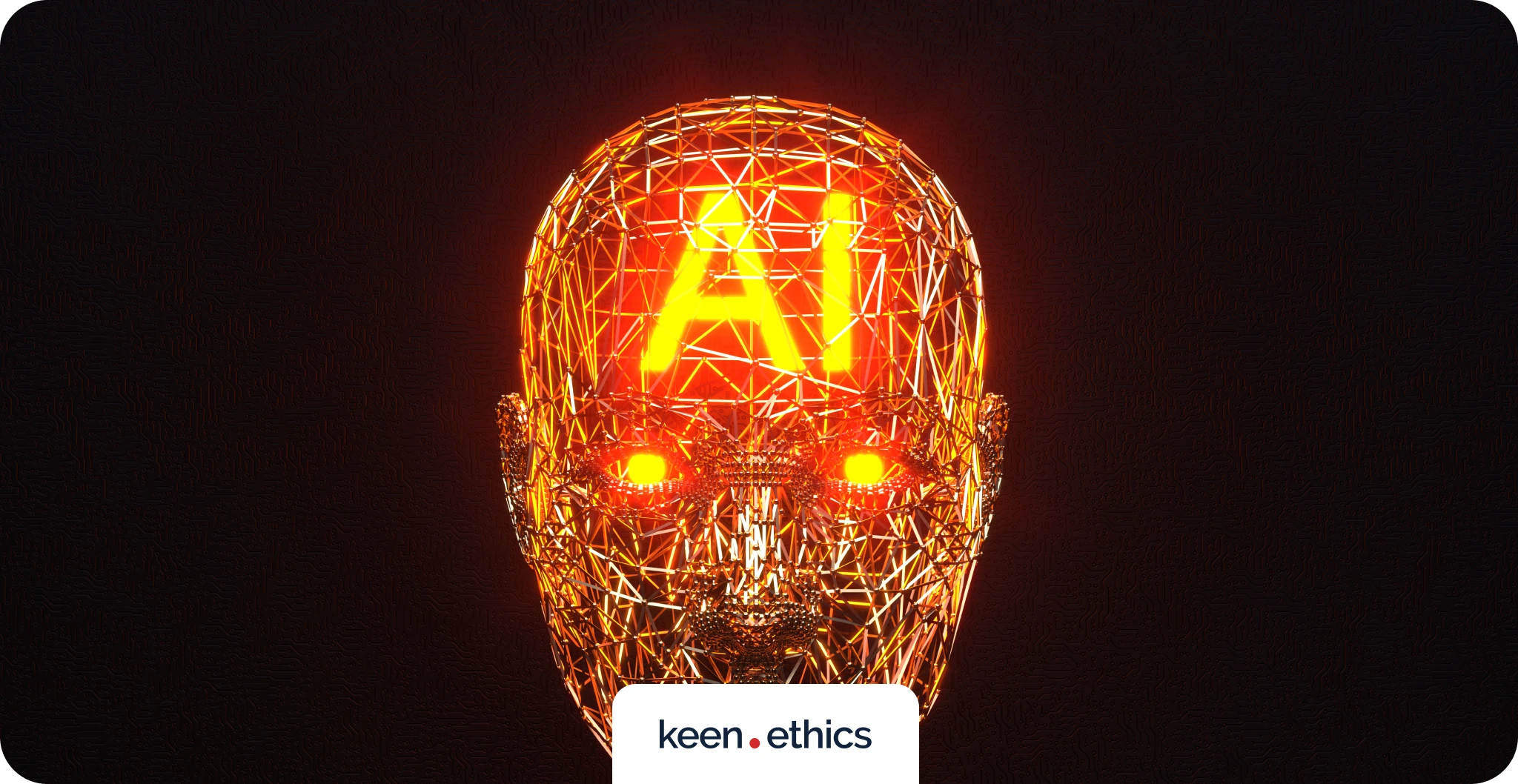
At the beginning of this article, we’ve mentioned that many AI discussions involve its safety. Let’s explore how safe weak AI is. Can it ultimately be dangerous? In our opinion, yes.
Modern technologies already allow us to use it in sensitive fields. For example, one can use AI in the school application selection process. A poorly configured AI may quickly start reflecting the biases of its creators. More importantly, this system will possess no way to correct itself due to having no consciousness. In short, we should be careful when applying AI to fields such as HR or healthcare.
A strong example of these dangers is the paperclip maximizer AI. Nick Bostrom, a Swedish philosopher, devised this thought experiment to showcase the dangers of weak AI. Let’s imagine an advanced weak AI with a task to produce as many paperclips as possible. Its algorithm can interpret this task radically and start transforming everything into paperclips. If not stopped, it’ll turn the Earth and the universe into paperclips. For this reason, we should always consider clear limits for such AI. One needs advanced directives to prevent the paperclip event.
Let’s join this future together!

